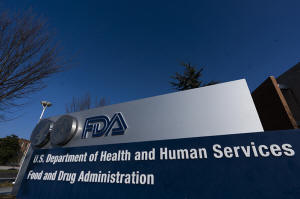FDA limits toxic lead in some baby foods
 Send a link to a friend
Send a link to a friend
 [January 07, 2025]
By JONEL ALECCIA [January 07, 2025]
By JONEL ALECCIA
The U.S. Food and Drug Administration on Monday set maximum levels for
lead in baby foods like jarred fruits and vegetables, yogurts and dry
cereal, part of an effort to cut young kids' exposure to the toxic metal
that causes developmental and neurological problems.
The agency issued final guidance that it estimated could reduce lead
exposure from processed baby foods by about 20% to 30%. The limits are
voluntary, not mandatory, for food manufacturers, but they allow the FDA
to take enforcement action if foods exceed the levels.
It's part of the FDA's ongoing effort to “reduce dietary exposure to
contaminants, including lead, in foods to as low as possible over time,
while maintaining access to nutritious foods,” the agency said in a
statement.
Consumer advocates, who have long sought limits on lead in children's
foods, welcomed the guidance first proposed two years ago, but said it
didn't go far enough.
“FDA's actions today are a step forward and will help protect children,”
said Thomas Galligan, a scientist with the Center for Science in the
Public Interest. “However, the agency took too long to act and ignored
important public input that could have strengthened these standards.”

The new limits on lead for children younger than 2 don't cover
grain-based snacks like puffs and teething biscuits, which some research
has shown contain higher levels of lead. And they don't limit other
metals such as cadmium that have been detected in baby foods.
Brian Ronholm, director of food policy for Consumer Reports, called the
limits "virtually meaningless because they’re based more on industry
feasibility and not on what would best protect public health.”
A spokesperson for baby food maker Gerber said the company's products
meet the limits.
[to top of second column]
|

Food and Drug Administration (FDA) building is shown in Silver
Spring, Md., Dec. 10, 2020. (AP Photo/Manuel Balce Ceneta, File)
 There’s no safe level of lead
exposure for children, according to the U.S. Centers for Disease
Control and Prevention. The metal causes “well-documented health
effects,” including brain and nervous system damage and slowed
growth and development. However, lead occurs naturally in some foods
and comes from pollutants in air, water and soil, which can make it
impossible to eliminate entirely.
The FDA guidance sets a lead limit of 10 parts per billion for
fruits, most vegetables, grain and meat mixtures, yogurts, custards
and puddings and single-ingredient meats. It sets a limit of 20
parts per billion for single-ingredient root vegetables and for dry
infant cereals. The guidance covers packaged processed foods sold in
jars, pouches, tubs or boxes.
The new guidance comes more than a year after lead-tainted pouches
of apple cinnamon puree sickened more than 560 children in the U.S.
between October 2023 and April 2024, according to the CDC.
The levels of lead detected in those products were more than 2,000
times higher than the FDA's maximum. Officials stressed that the
agency doesn't need guidance to take action on foods that violate
the law.
All contents © copyright 2024 Associated Press. All rights reserved
 |